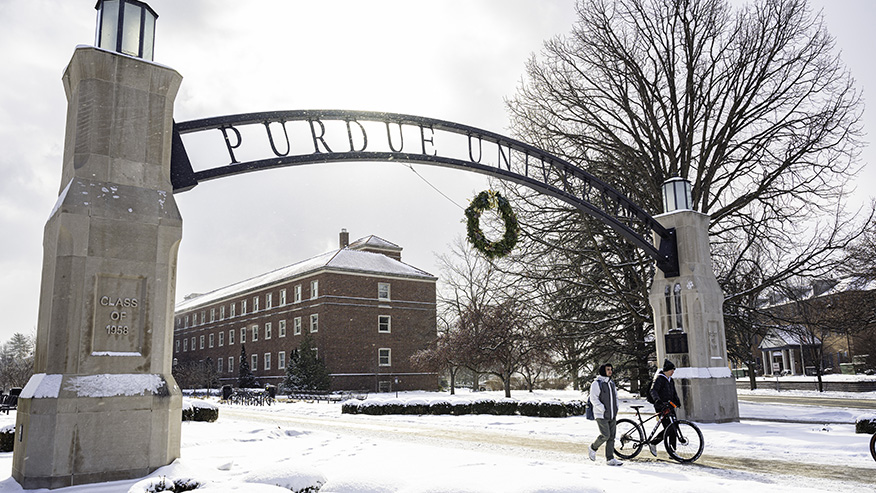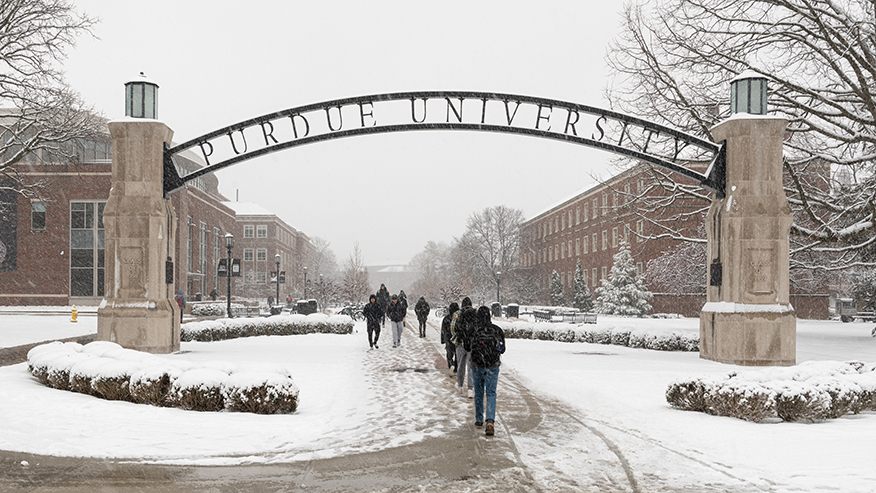Purdue Interdisciplinary Life Sciences Research Building project to go to state lawmakers in 2025-27 capital request

Hansen (Arthur G.) Life Sciences Research Building (HANS)
Purdue University’s 10-year capital plan, which was reviewed and approved by trustees on Aug. 2, includes an Interdisciplinary Life Sciences Research Building project on the university’s West Lafayette campus that will soon be submitted to the state as part of the process to request funding in the upcoming biennium budget.
The 140,000-square-foot facility will include a new, shared space for research institutes such as the Purdue University Institute for Cancer Research (PU-ICR) and other life science research and teaching programs across campus, enhancing the connection to existing core facilities and fostering a collaborative environment among researchers.
This project supports One Health, one of the university’s four key strategic initiatives. One Health’s aim is to lead critical research for animals, humans and environmental health through four impact areas: academic health affairs, the One Health Innovation District, new life sciences and chemistry-related research facilities, and an Eli Lilly and Company partnership.
Currently, life sciences research facilities across campus vary in age and capabilities. To increase grant dollars and foster the growth of graduate students, postdoctoral researchers and research scientists, high-quality research space is required. With much of the life science research space on campus being utilized, renovating existing space in the current life science research footprint would put further strain on already-strained capacity.
“As part of the 10-year capital plan process, the university considers the appropriate sequencing and timing of a number of strategic capital projects,” said Jay Wasson, vice president of physical facilities and chief public safety officer. “We always consider the renovation of existing facilities first, but in this case, the construction of a new facility for life science research is a critical first step in a process that will lead to the transformative renovation of a number of existing facilities in the coming years.”
The Interdisciplinary Life Sciences Research Building will enable a series of major research facility renovations for the four departments related to chemistry in the colleges of Agriculture, Engineering, Pharmacy and Science, enhancing the entire portfolio of research space. The new facility will provide energy-efficient and spacious research laboratories that will meet the needs of the innovative and leading-edge research being conducted on Purdue’s campus and the increasing demand for quality life science research space. The building’s flexible and open-concept laboratory design will be central to providing a platform for cross-disciplinary research.
As the new home of the PU-ICR, the Interdisciplinary Life Sciences Research Building will also help the cancer center retain the National Cancer Institute (NCI) designation it has held for over 45 years, which signifies the highest federal rating a cancer center can achieve. This designation is awarded only to the nation’s top cancer centers in recognition of their innovative research and leading-edge treatments. As a part of the renewal submission for the NCI designation, the PU-ICR is required to demonstrate planning for upgraded facilities. The Interdisciplinary Life Sciences Research Building will help meet this requirement by providing a new and improved space, equipping the center with modern research capabilities.
“Advancing discoveries, especially around cancer and health, is some of the most directly impactful research we perform at Purdue,” said Eric Barker, Purdue vice president for health affairs and the Jeannie and Jim Chaney Dean of Pharmacy. “The ability to recruit and retain the very best faculty and students will advance our work in drug discovery, new advanced therapies and innovative diagnostics relevant to human health. This research connects to our One Health pillar with relevance to animal and plant health as well. In addition to advancing our land-grant research mission, these facilities play an important role in the training and education of our students engaged in research. Graduates from our research-focused programs will fulfill workforce demands associated with the growing life sciences and biotechnology sectors throughout Indiana.”
The United States is home to 71 cancer centers. Purdue’s center is one of seven basic laboratory cancer centers, the only cancer center in the Midwest and the only one at a public institute.
The Interdisciplinary Life Sciences Research Building is projected to cost $160 million, with $90 million requested from the state and $70 million coming from other funding.
The 10-year capital plan stems from a collaborative process launched in January among executives, vice presidents, chancellors and Administrative Operations leadership to identify facility needs related to the university’s strategic initiatives and other current planning activities.



